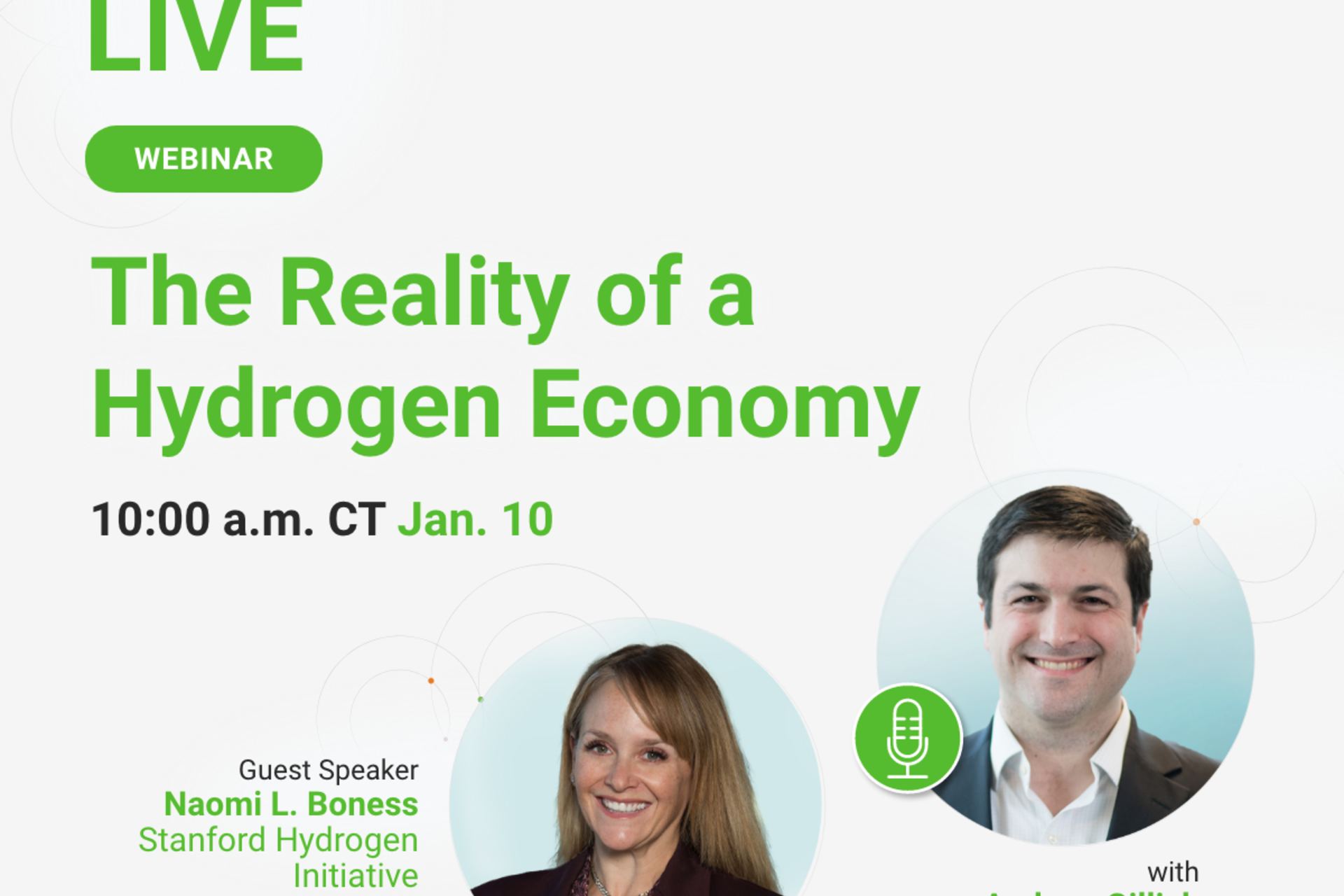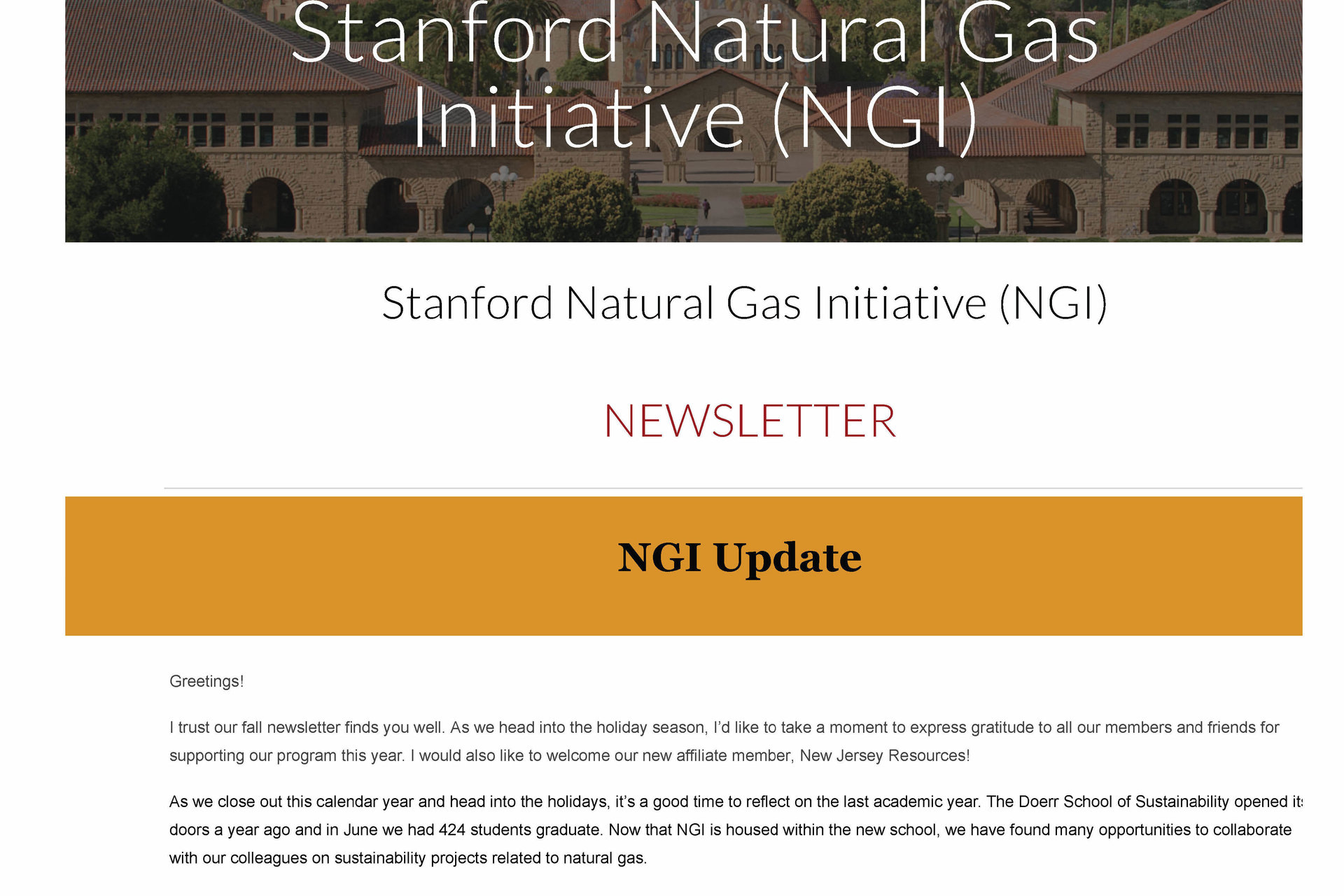How microbes might enable space exploration and a fossil-free future
What would it take for us to create useful products from greenhouse gasses, enable crewed missions to Mars and achieve a fossil-free circular economy on Earth? Nils Averesch says the answer lies in the hidden power of molecular factories we call microbes.
Averesch is a research engineer in Stanford University’s Department of Civil & Environmental Engineering. Prior to Stanford, Averesch earned a PhD in metabolic engineering from the University of Queensland, Australia. When he’s not scuba diving or training to become a pilot, he spends most of his time genetically engineering gas-fermenting microbes. These biological machines excel at transforming waste into useful products with high efficiency. Averesch is also an investigator of the NASA-sponsored 'Center for Utilization of Biological Engineering in Space' (CUBES), where he explores how microbial biomanufacturing can improve the resilience of long-duration space explorations to Mars.
“I aspire to help develop a sustainable circular economy that is not reliant on fossil fuels,” said Averesch. “When I look at nature and its biology I see a plethora of technologies that could replace the petrochemical industry.”
Putting it to the test
With support from Stanford’s Natural Gas Initiative, Averesch started out by engineering highly specialized microbes that can grow using methane as their sole input for production of para-hydroxybenzoic acid, a precursor compound to high-performance materials such as liquid-crystal polymers. This is a starting point for making useful products from greenhouse gasses, leveraging the unique advantages of microbial biochemistry.
This project had an unusual beginning. “During the COVID-19 pandemic there were virtually no collaborations possible, so I had to come up with a project that I could do just by myself, relying only on what was available in my lab,” recalled Averesch. The project has since culminated in a patent.
Averesch initially engineered the same extremophiles – microbes that survive under extreme conditions – for direct production of bioplastic from methane, but he faced unexpected challenges due to the peculiarities of these highly specialized microbes. This led Averesch to pivot and use a different microbe that utilizes carbon dioxide and hydrogen as inputs.
“We often view genetic engineering as a way to select useful properties found in nature, treating it as a modular toolbox,” said Averesch. “Experiments help us recognise the limitations. You have to work around it.”
Bioplastics from waste
Recently, Averesch found a new way to convert harmful waste-streams, such as by-products from industrial processes like CO2, into new, durable bioplastic. For this purpose, Averesch recruited Cupriavidus necator, a bacterium that feeds off a range of different low-cost carbon compounds and rapidly converts them into bioplastics with little energy.
While useful, synthetic materials like polyesters are a threat to our environment. Greenhouse gasses are emitted throughout the life cycle of most plastics: from extraction and transport of petroleum feedstock, to refining, and leakage of plastic waste into the environment. Many scientists have been tinkering with bioplastics, in the hope of creating alternatives that have similar properties to existing plastics but are bio-based and biodegradable. For the most part, current bioplastics are not strong enough and too expensive for commercial use.
“The main reason why it's difficult to find an industrial footing with bioplastics is because fossil fuel-based plastic is so cheap,” said Averesch. “Part of this cost is the feedstock.” In recent work, Averesch examined the possibility of creating bio-polyester, which can be cheaply derived from wood waste or greenhouse gasses using microbes.
Through genetic engineering, Averesch has modified C. necator to incorporate compounds with benzyl groups, hydrocarbons with great chemical stability, in the bioplastic that these bacteria naturally produce. This adjustment yields a new family of bioplastics that are anticipated to be more durable, mimicking structures of petrochemical-based plastics like polyethylene terephthalate (PET), commonly used to make water bottles. At the same time, their production can absorb CO2 as the bacteria grow and generate the polymers.
Now, Averesch works to construct strains of these microbes that can cheaply produce bioplastics directly from waste gasses in a one-step process, avoiding the need for exogenously provided precursors. To do so, he plans to tune microbial metabolism to utilize cheap feedstocks, such as methanol, formate and CO2 more efficiently. This could bring microbial biotechnology significantly closer to application as a highly resource-efficient manufacturing system. Overall, Averesch’s research provides a proof-of-concept for how we can leverage the hidden power of microbes to combat fossil-based plastics and replace incumbent industrial processes with sustainable alternatives.
Microbe’s mission to Mars
Beyond Stanford, Averesch is also Co-Investigator of NASA's CUBES, where he leverages the microbial cell factories he is developing to support exploration of Mars.
“There really isn't much on Mars, but there is carbon dioxide, some nitrogen, and water,” said Averesch. “That's basically all the resources you need to perform microbial biotechnology. With that, you can create all kinds of bioproducts, including bioplastics.” Being able to make materials for manufacturing of small replacement parts on future missions to Mars would reduce the required payload and by that could significantly reduce the cost of such endeavors.
To Averesch, bioengineering for long-duration space exploration is a sand-box experiment on circularity and self-sufficiency. “If you figure out the technologies to support six astronauts on an approximately 2.5-year round trip, there will almost certainly be several lessons to learn with importance for scale-up to a couple of billion of us on Earth,” explained Averesch when asked how he reconciled the resource-intensive space exploration with his goals of developing sustainable futures.
Through his work with CUBES, Averesch had the opportunity to join a crew of four scientists on a space analog mission at the Hawai‘i Space Exploration Analog & Simulation research station. For two weeks, the team worked and lived inside the compact station that mimics physical conditions on Mars: a confined environment with minimal water use, rationed preserved food, strict entrance protocols, and delayed communications. “It makes you appreciate what you have here on Earth,” reflected Averesch. There, Averesch brought his microbes and demonstrated their ability to produce bioplastics under mission-like conditions.
Microbes that are able to survive on Mars might look very different to the ones we know from Earth. Studying extremophiles, Averesch aims to figure out in what kinds of environments life might be able to exist while discovering microbes that are more suited for space applications. For example, Mars has briny underground lakes with extremely high salt content. This led Averesch’s team to isolate a microbe from the Great Salt Lake in Utah to study its potential for production of bioplastics in conditions similar to Mars.
On Earth, extremophiles might be key to unlocking scalable biomanufacturing. Under the severe conditions in which extremophiles grow – like high acidity or alkalinity, high radiation, temperatures or salt content – not many other microbes are able to survive, reducing the risk for contamination. “If you domesticate these extremophiles for application in microbial biotechnology, you basically don't have to worry about maintaining a pure culture,” said Averesch. “This could bring down process costs significantly.”
Averesch sees microbial biotechnology as a big part of the future of chemical engineering. “Our modern society is based on chemistry – making consumables and durable products based on petrochemistry, which we have all seen by now is not very sustainable,” said Averesch. “Biotechnology might be how we can step away from fossil fuels. After all, the ability to convert inorganic carbon into chemicals is what life as we know it is founded on.”
Explore More
-
Morning Energy Live Webinar with Naomi Boness
-
How microbes might enable space exploration and a fossil-free future



